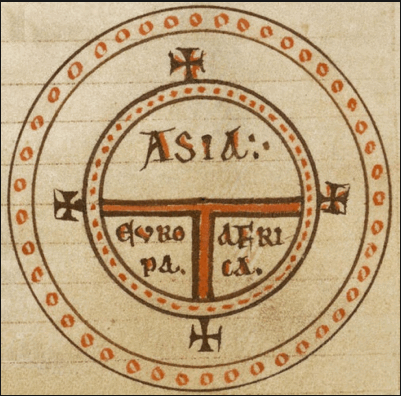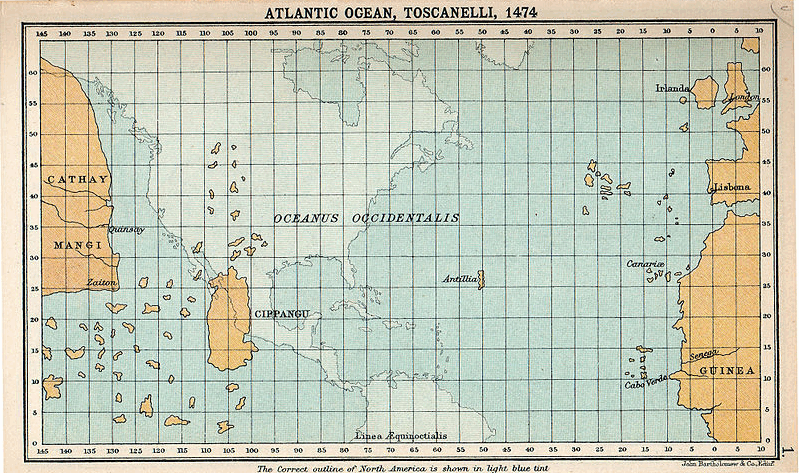-
T and O Map- The Explorers
Posted by William Reilly on 1/15/2014 In our Explorers unit, we are learning the significance of the T & O Map and how early explorers used this map to begin their exploration of the new world. It was thought that there were only three continents, with the "T" representing the Mediterranean Sea which divided them.
In our Explorers unit, we are learning the significance of the T & O Map and how early explorers used this map to begin their exploration of the new world. It was thought that there were only three continents, with the "T" representing the Mediterranean Sea which divided them. This map was the map drawn up by early explorer Dr. Toscanelli in 1474, which represented what he thought the world looked like at his time.
This map was the map drawn up by early explorer Dr. Toscanelli in 1474, which represented what he thought the world looked like at his time. -
Displacement
Posted by William Reilly on 12/19/2013In our unit about the metric system, we learned about the concept of displacement using graduated cylinders. After filling the cylinder up with water, we placed a rock in it to see how much water was displaced. -
The Metric System- Capacity
Posted by William Reilly on 12/18/2013To clarify the homework, we reviewed the different prefixes used in the Metric System and the power of 10 each prefix represent. The liter is the unit of measurement we focused on, which measures capacity- or amount of liquid. -
The Metric System
Posted by William Reilly on 12/11/2013We began our unit on The Metric System- meters, liters, and grams- and started to learn how to do metric conversions.The Greek prefixes include kilo-, hect-, and dek-, which are greater than 1 (ie. 1 kilometer= 1000 meters)The Latin prefixes are dec-, cent-, and milli-, which are a fraction or less than one of a unit (ie. 1 centimeter = 1/100th of a meter) -
Prepositions
Posted by William Reilly on 12/3/2013As part of an English/Language Arts lesson, we learned about the use of prepositions and how each has an object to which it refers to in the prepositional phrase. -
Triangles
Posted by William Reilly on 11/25/2013During our math lesson, we started a lesson on triangles. Every triangle measures 180 degrees, but all three sides can be different (scalene), all the same (equilateral) or have two the same size (isosceles).
-
The Great Lakes
Posted by William Reilly on 11/19/2013To help remember the names of the Great Lakes, we made use the acronym HOMES. -
Close Reading
Posted by William Reilly on 11/19/2013"Close reading" is a strategy we are using when we read novels and articles in class. These are a few examples of questions to ask to better understand the title, and make connections between the title and what the text may be about.- Look at the text
- Why would the author choose that specific title?
- Why is our novel called "Eagle Song?"
- Why do people choose these title for books?
- What is the setting of the story?
-
Social Studies
Posted by William Reilly on 11/18/2013Before the "Explorers" unit, we are reintroducing some terms from the Native American unit. The purpose of this is to familiarize students with the timeline of events and where some of the tribes were located in New York and across the country before the explorers came to the Americas. -
Sprint Strategies
Posted by William Reilly on 11/13/2013To sharpen math skills, we are doing math "sprints" each day to review various math concepts. These are some strategies we as a class came up with to complete the sprints quickly and accurately.

